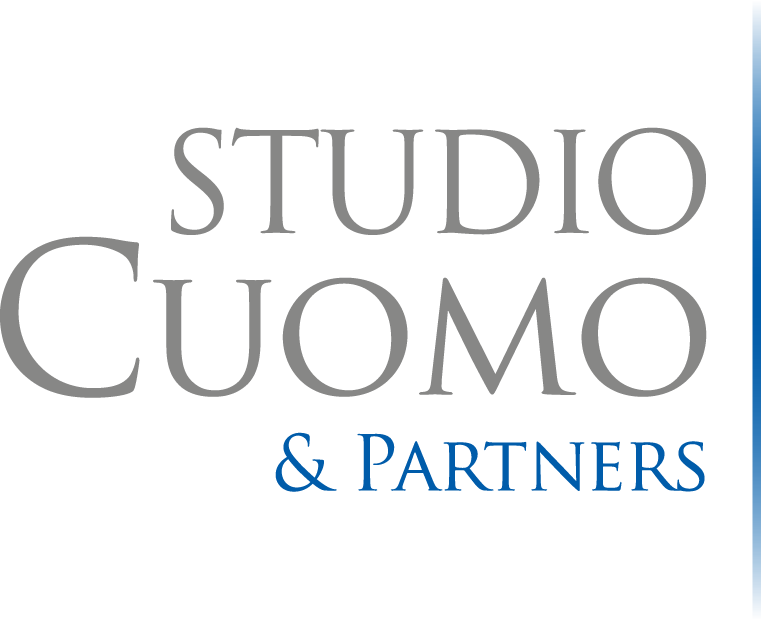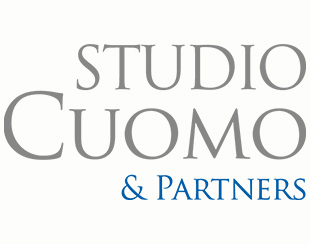
15 Jul statute of limitations and recidivism
The subject of the prescription, starting from its nature, substantive rather than procedural, it is one of the most debated for the issues it raises in the relationship between domestic and European law.
While the dialogue between national and European Courts is still ongoing, the institution of limitation is at the center of judicial practice and raises material questions that are not easy to resolve, starting from mere calculation.
In this perspective, of immediate relevance in practice, recent jurisprudence is worth analyzing that, perhaps, it didn't get the prominence it deserved. The topic we are dealing with is that of the possible violation of the general principle of the ne bis in idem substantial in calculating the limitation period for the crime committed by the repeat offender (aggravated or repeated).
The interpretative problem has this genesis: art. 157 c.p., as it is known, provides that the time in which the offense is prescribed takes into account the maximum law and the aggravating circumstances with special effect (between these, peacefully, recurrence). Likewise, art. 161 c.p. requires that recidivism be considered in calculating the maximum term, after which, even in the presence of acts of interruption, the offense is prescribed.
The first provision establishes, then, the basic prescription time calculated on the maximum legal limit and in any case not less, for crimes, a 6 years) and the second the time limit (that is, a calculated increase, instead, as a fraction of the time necessary to prescribe pursuant to art. 157 c.p.); both provide for an increase in prescription times in the case of aggravated relapse (1/2) and repeated (2/3), understood as per art. 99, comma 4, n. 2, c.p.
The Court of Cassation, in a recent pronunciation (Cass. pen., Sez. WE, 9 September 2015, n. 47269, imp. Fallani) warns of the risk that such a double increase for relapse - which, as mentioned, involves a temporal dilation (1/2 o 2/3) both on the calculation of the time-base, and on that of the time-limit - constitutes a substantial violation of the ne bis in idem principle, since it would result in the «in malam partem application of the same element, recurrence, within the same institution, namely the prescription. Repeated recidivism can therefore be taken into account for the purposes of the minimum limitation period or for the purposes of the maximum limitation period. But repeated recidivism cannot be taken into account for both purposes.
In the present case, the Court held that the double increase could not be made, which would have brought the maximum limitation period to years 16, months 8 (years 6 corresponding to the maximum legal requirement for the crime, +2/3 for repeated recidivism pursuant to art. 157 c.p. for years 10; +2/3 ex art. 161 equal to the final measure of years 16, months 8). The Court concludes by establishing that in the case under its consideration the limitation period is years 10, corresponding only to the increase pursuant to art. 157 c.p.
It is clear that the interpretative approach inaugurated by the Court, if properly implemented, it would have had an enormous impact on a significant mass of proceedings that "live" by virtue of the double-increase.
However, the Cassation, in later pronunciations, having to decide on the appeals presented by the defenders, strong of the aforementioned, he seems to be aware of the virtually disruptive significance of the issue, departing in a decisive way from the previous interpretation.
The three motivational paths of the Court do not appear, however, dispel any doubts.
The application of the increase for recidivism would not be, in the perspective just described, left to the free will of the interpreter. Simply, if the increase takes place for the first time pursuant to art. 157 c.p., so, it shouldn't operate a second time, following an interruption; so far as, instead, there had not been a concrete extension of the ordinary term due to the recidivism, here it would be considered pursuant to art. 161 c.p.
For example, in the case of the crime referred to in art. 628 c.p. (maximum edictal years 10), the basic prescription time for aggravated relapse would be 10 years + 1/2 = 15 years; at this point, in the event of an interruption, could not operate the increase for recidivism again up to the time limit, but only the ordinary increase of 1/4.
Instead, in the case of a crime punishable with a maximum penalty of years 3 (as expected, eg, art. 582 c.p.), the ordinary limitation period for both recidivists and non-recidivists would be identical (3 + 1/2 = 4 years, months 6 as well as 3 + 2/3 = 5 years, therefore in any case below the minimum threshold of 6 years provided for by art. 157 c.p.). recurrence, which was not relevant in the calculation of the basic term, it could well be assessed for the greater expected increase, following an interruption, from art. 161 c.p.
It doesn't seem that convincing, therefore, the consideration that would be left to the mere will of the interpreter when (ex art. 157 c. p. the former art. 160 c. p.) apply the increase for relapse.
Secondly, the remark made by the Court according to which the principle of ne bis in idem does not seem so convincing here: indeed, though, as argued, the institution of limitation "is not the subject of the protection provided by art. 4 of Protocol No.. 7 ECHR, which only prohibits "prosecuting or trying a person for a second offense to the extent that the latter are based on facts that are substantially the same" (among many, Grande Camera, Court Education, 10 February 2009, Zolotoukhine c. Russia, p. 82)» (Cass. pen., n. 48954/2016 cit.) this does not mean that the general principle of ne bis in idem, in the present case, cannot be applied in internal law. Indeed,the triad of conduct / event / causal link mentioned by the Constitutional Court (200/2016 cit.), it is considered twice despite remaining identical to itself, since it is always an increase for recidivism that relates to the same assessment on the same past conduct of the offender, which attest to a "personal quality", in the sense of greater social danger.
Lastly, it seems necessary to challenge the alleged isolation of the adverse interpretation. Indeed, in at least two other recent judgments, the same Court of Cassation seems to accept the orientation against the double increase. First the Court, called to rule on the expiration of the limitation period, applies the increase for recidivism according to art. 157 c.p. but it does not work, subsequently, l'increase ex art. 161 c.p. since – reads the justification – «it must however be considered that, with regard to the offenses referred to in art. 2 (d.lgs.74/2000) just remember, the limitation period, in this case, the interruption represented by the request for indictment remains ineffective as the extension has already been considered for the purposes of art. 157, comma 2, c.p. (cfr. Cass. pen., Sez. WE, 9 September 2015, n. 47269, Fallani and more) and no suspensive cause has occurred, has passed " (Cass. pen., Sez. III, 19 October 2016, n. 50763.
Another ruling of the Court seems to reach a similar conclusion (Cass. Sez. V, 7 December 2016, n. 22197) that, quoting the previous one 47269/2015, sets the maximum limitation period for the offense provided for by art. 624-to c.p. (maximum penalty years 6) against repeated recidivist (increase of 2/3) in years 10, despite the presence of an interrupting act. If he had made the double increase, instead, the envisaged offense would have expired in years 16, months 8, due to the further increase of 2/3.
The jurisprudential framework is therefore not yet defined: the thesis that allows the double increase, as backed with balance, "It appears numerically in the majority although in an overall interpretative framework not yet definitively consolidated" (Cass. pen., n. 50619/2017 cit.).
The orientation that provides not to make a double increase by virtue of the same fact, that is, of recidivism, still appears in the Court's jurisprudence, which seems to oscillate between two completely opposite extremes. On one side, not all the arguments made against the double increase ban appear fully convincing, on the other hand, it cannot be ignored that the furrow dug by the Taricco sentence between the prescription pursuant to art. 157 c.p. and that pursuant to articles. 160 e 161 c.p. it is deeper and deeper.
Indeed, one of the most accredited solutions to heal the rift between the internal system and the decisions of the Edu Court - which, in a nutshell, imposed on the Italian Judge to "disapply" the statute of limitations in VAT fraud crimes for which his work guaranteed substantial certainty of impunity, such as to make the criminal law ineffective - is to consider art. 157 c.p.. as a provision of a substantial nature (che goda, therefore, della garanza del no crime, no punishment without law) while the articles. 160 e 161 c.p., that they would find "ideal reason and legal cause" in an act of the procedure (entirely possible for the offender and absolutely not protected pursuant to art. 25 Cost.), they would thus have a purely procedural nature (in the event of a succession of norms, the criterion of the tempus regit actum would thus apply).
Thereby, there would be, therefore, a strong conceptual separation between the two terms, so much so that we can speak of a split between the legal nature of the prescription and that of the interruption.
This would allow, for the purposes of interest here, in accordance with the majority orientation, to be able to operate the double increase for recidivism pursuant to art. 157 c.p. and also pursuant to articles. 160 e 161 c.p. since these would be institutions of a different nature, definitely separated from each other.
This solution does not appear, however, entirely compliant with the prohibition of ne bis in idem which is certainly the general principle that animates the entire legal system. Indeed, the statutory extension imposed by art. 161 c.p. for the aggravated or repeated relapse it is a fraction of the time it takes to prescribe, which already takes into account recidivism. So, not only does it extend the maximum term by virtue of the same fact, which seems possible for the reasons set out above, but the subsequent increase is even calculated on the time already increased. For example, in the case of an offense committed by an aggravated recidivist, punished within a maximum of years 6 (for example pursuant to art. 624 to c.p.), the ordinary prescription is years 9, while the maximum is years 13, months 6: the calculation of 1/2 following an interruption, the same happened also on those 4 years and 6 months already the result of an increase due to relapse. Thereby, it seems that 2 years and 3 months is the longest time resulting from the application of the relapse (art. 161 c.p.) on the increase due to the same relapse previously considered.
In conclusion, by virtue of a broader interpretation of the general ne bis in idem principle, the need felt by the jurisprudence of the Supreme Court to prohibit the double increase of the prescription times by virtue of aggravated or repeated recidivism can be accepted, at least, in the sense of excluding from the second calculation the application of the longer time foreseen for recidivism also on that portion of time which constitutes, itself, the mere result of the first increase for the same relapse.


